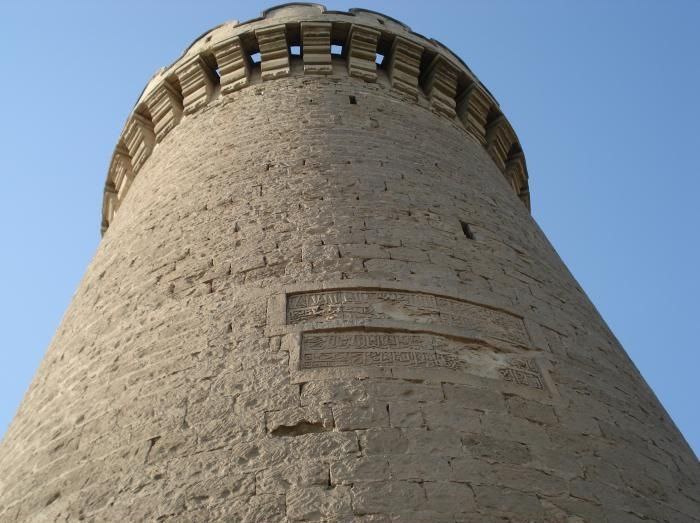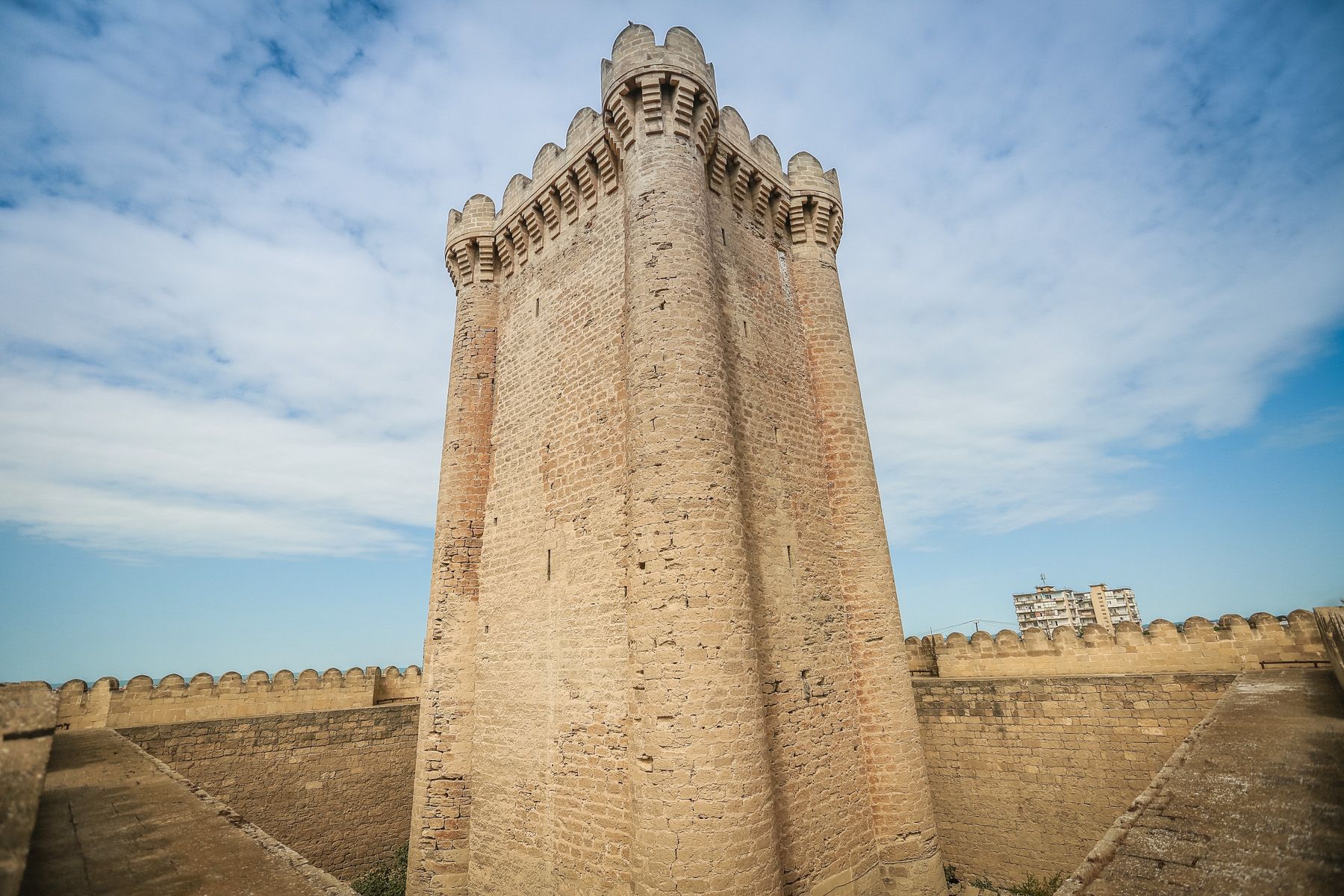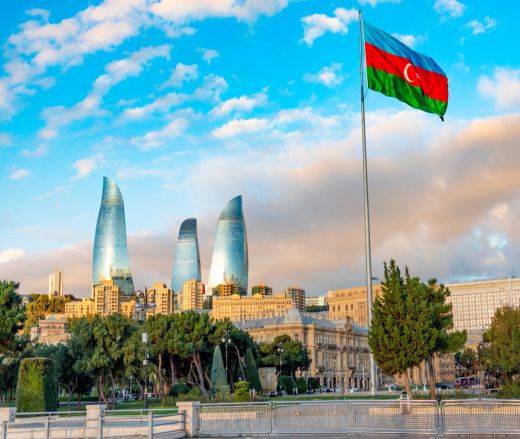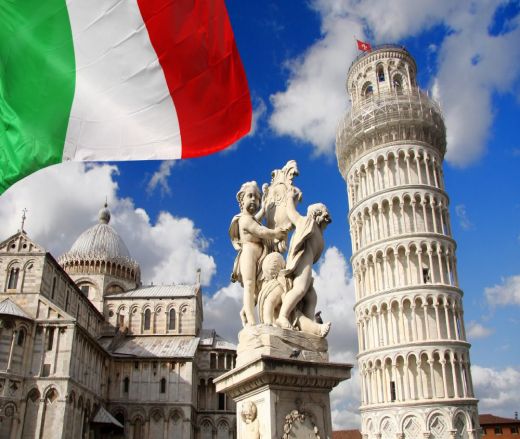Fortresses in Baku - Mardakan and Nardaran. Gala Historical and Ethnographic Museum.
Fortresses in Baku - Mardakan and Nardaran. Gala Historical and Ethnographic Museum.
There are a lot of castles in Azerbaijan which were built in the Ancient and Medieval Times to please even the least castle-curious. From the clifftop isolation of the “lamp castle” Chirag Gala, to the iconic cylindrical Maiden Tower in the center of Baku’s old city, Azerbaijan’s best castles reward visitors with stunning views and fascinating history.
There are a lot of castles in Azerbaijan which were built in the Ancient and Medieval Times to please even the least castle-curious. From the clifftop isolation of the “lamp castle” Chirag Gala, to the iconic cylindrical Maiden Tower in the center of Baku’s old city, Azerbaijan’s best castles reward visitors with stunning views and fascinating history. Thus the names of some castles have "qala", "divar" or "qüllə" suffixes.
Quadrangular castle (Azerbaijani: Dördkünc Mərdəkan qalası) is a historic castle located in Mardakan, Baku. It is one of the most noticeable castles in Mardakan, a similar one being Round Tower. The castle was built in the middle of the 12th century. The castle was used as a shelter and observation point.

Quadrangular castle (Azerbaijani: Dördkünc Mərdəkan qalası) is a historic castle located in Mardakan, Baku. It is one of the most noticeable castles in Mardakan, a similar one being Round Tower. The castle was built in the middle of the 12th century. The castle was used as a shelter and observation point.
The castle was built in a quadrangular form. It is divided into 5 tiers. The castle consists of 6 rooms. The inner courtyard of the castle is 28x25 m. The height of the tower is 22 meters. The thickness of it is 2.10 meters at the lower part and 1.60 meters at the upper portion. There are 76 stairs in the castle.
108 empty wells in the yard were used to store food. There is also a water well of 25 meters when entering the entrance of the castle.
The castle has smooth walls lined with rough stone. In the tower, the defense can be safely conducted. For this purpose, it is equipped with everything necessary. All the battlements help the tower to form a kind of crown, and due to the high-quality construction in the castle, the castle has been very well preserved to this day.

There is information that all the fortresses of Absheron are interconnected by underground passages. But thorough research in this direction has not been carried out. On the territory of the fortress, there are numerous wells with a depth of three to four meters. According to some assumptions, they were used, including for storing food.

In the courtyard of the fortress, there are a huge number of exhibits.
The Big Fortress is often visited by tourists from all over the world and is a must-see place for excursions in Azerbaijan!
Round Tower (Azerbaijani: Dairəvi Mərdəkan qalası) is a castle located in Mardakan, Baku, Azerbaijan. The castle is also called the Shikh fortress by residents.
At the top of the gate of the tower, there are three inscriptions written in Arabic on a large rectangular stone layer. According to the first inscription on the castle, it was built during the reign of Fariburz III. The second inscription shows that the owner of the Round Mardakan fortress was Ihsac bin Kakuli and it was built in 1232. The third inscription indicates that it was built by architect Abd al-Majid Masood oghlu.

The height of the Round Mardakan Tower is 16 meters. It is built of limestone and lime solution. The fortress surrounding the tower consists of a square-shaped yard (25x25 m), surrounded by stone walls, seven meters high on each side. At corners of the fortress wall, there are towers, railing, and watchtowers. The tower is round in the plan and it gets narrow upward.
The height of the tower is divided into three parts. These portions are covered with domes and connected with an installed stair. To enlighten the second and third floors there are special windows, enlarging from outside to inside, in the form of a narrow strip.

Nardaran Fortress (Azerbaijani: Nardaran qalası) was built in 1301 by architect Mahmud ibn Sa'ad in the northern part of Absheron Peninsula. Nardaran Fortress is located 25 km north of Baku in the village of Nardaran near the town of Mashtaga. Shirvanshahs used the fortress for both observation and defense. Nardaran Mosque or Rahimakhanim sanctuary which was built in 1663 is located about 200 m from the fortress.
On October 24, 2001, the Nardaran fortress was included on the UNESCO World Heritage Tentative List in Need of Urgent Safeguarding.
The fortress is divided into three parts. The first part of the fortress is higher than the other parts. The thickness of the walls is ranging from 1, 5 to 1, 8 meters. A deep well is located on the first floor of the tower. In some sources, it is noted that the fortress was supplied with an underground sewerage system.
Above the entrance to the central tower, at the height of the second floor, there are two inscriptions, carved out of stone. On the last inscription the name of the master who also built the old mosque and minaret in the village of Shikhov in the XIV century and a mosque in Baku called the Molla-Ahmed Mosque and the date of 1300 is shown.

The height of the tower consists of three tiers, covered with flat stone dome vaults and connected by stone stairs. The fortress was made of white stones. The height of the tower is 12 meters high and the height of the walls that it's surrounded by is different. The fortress is located in the center of a square courtyard. There are also 4 corner towers with a barrier and loopholes.
In the construction of the Nardaran fortress was used local stone. The building of the tower is made of hewn stone, laid in straight rows, with thin joints between them. The building of the tower is made of hewn stone, laid in even rows, with thin joints between them. The masonry wall was built of roughly hewn stone of varying sizes, some of which had split off in places.
Many scientists still argue about why it was necessary to build a fort in this part of the Absheron Peninsula. Most often attacks on it happened from the western border or the southeast coast. However, this fort is equally distant from both limits.

At present, the Nardaran Fortress has the status of an architectural monument of history and culture of world importance. Officially, it houses a museum.
How to get there?
The Nardaran Fortress is located in the north of the Absheron Peninsula, which is washed by the Caspian Sea. It is separated from Baku by 27 km. You can get there by bus or car. Bus number 189 departs from the metropolitan station Korogly, which delivers to the destination in about 1 hour
By car from Baku to the Nardaran Fortress can be reached in 40-45 minutes. To do this, you need to move northeast along the Heydər Əliyev, Bakı Dairəvi Yolu or Zagulba yolu road.
Forty kilometers from Baku there is Gala, the well-known open-air historical and ethnographic museum. The museum, founded in 2008 at an archaeological site located in the same-name village, is dedicated to the history of the Absheron Peninsula. There, you can see how the Azerbaijani lived, what they ate and drank, and how they managed a household over the period from the XVI to XIX centuries.

The territory of the complex exceeds 81 hectares – enough to accommodate over 100 football fields!
Here you’ll witness rock paintings, constructions, and everyday items from the 3rd-2nd millennia BC and climb to the top of a fortress dating from the 14th century, from where an incredible view opens up of the Absheron Peninsula. In the medieval town, meanwhile, you’ll discover how ancestors lived and see their clothes, crockery, coins, and ornaments. And if you take an interactive tour you can try weaving a carpet, crafting a clay jug, baking bread in an old oven, and working in a real blacksmith’s workshop!

The exposition of yet another unusual museum at the complex – From Waste to Art – will bring you back to the present with an assortment of artworks made from… household rubbish: cables, lamps, wheels, and many other worn-out things.

At the Gala Reserve, you can touch the exhibits with your hands, which the kids will love as well as the mini zoo. Tours for kids aged 3 and under are free while for those aged 12 and under you pay half price. And here they won’t stop you from taking photographs.
In 2011, the Qala Information Centre, the Ethno-Ecological Centre, and the Qala Antiques Museum were created in the territory of the Qala Museum Complex, and a caravanserai-restaurant started to function. The ground floor of the caravanserai-restaurant functions as a cafe, the first floor is a restaurant. 14 rooms (7 open and 7 closed) in the Oriental style have been created in the caravanserai restaurant’s backyard.
Conditions have been created in the territory of the Museum Complex for the movement of physically disabled people, security cameras installed, a parking lot in a 35 sq.m.-area, and a garage for electro-cars were built.
All together, Gala Open-Air Ethnographic Museum is a perfect place to learn about the historical lifestyle of Absheron people.











